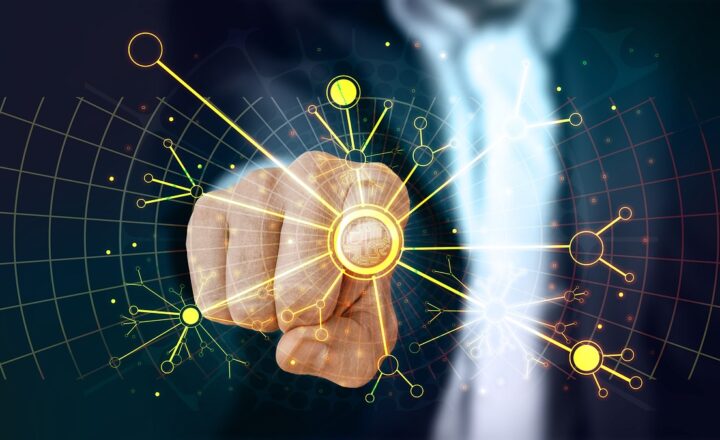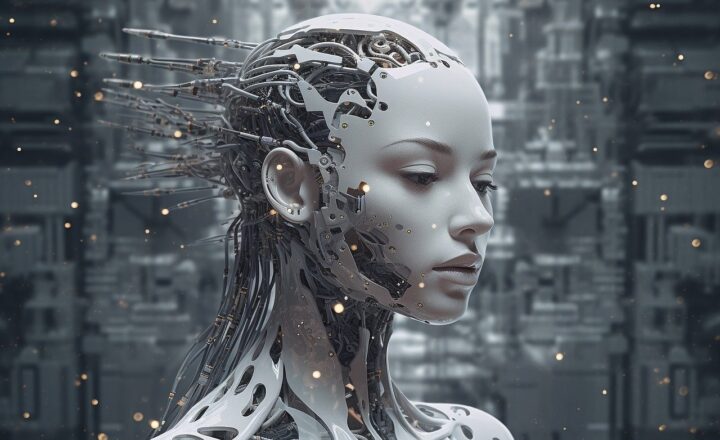A Comprehensive Guide to AI-Powered Image and Video Recognition Technology
November 10, 2024

Artificial Intelligence (AI) has transformed numerous industries, and one of its most exciting applications is in image and video recognition technology. From security surveillance to social media tagging, AI’s ability to analyze and interpret visual data has far-reaching implications, reducing time-consuming manual efforts and providing unique insights.
In this comprehensive guide, we will explore the fundamentals of AI-powered image and video recognition technology, its applications, benefits, challenges, and future trends.
1. Understanding Image and Video Recognition Technology
Image and video recognition technology refers to the ability of a computer program to identify objects, people, scenes, and activities in images and videos. This is achieved using computer vision, a field of AI that trains computers to interpret and understand the visual world. AI models utilize deep learning algorithms, which are designed to mimic the workings of the human brain, to process visual inputs and make predictions based on learned patterns.
- How it Works: At the core of image and video recognition are neural networks, particularly Convolutional Neural Networks (CNNs). CNNs are particularly well-suited for image processing tasks due to their ability to detect spatial hierarchies in images. By applying multiple layers of filters during the training process, these networks can learn to recognize complex patterns and features, ultimately classifying images or detecting specific objects. The same principles apply to video recognition, where temporal data is considered, helping algorithms understand actions across multiple frames.
- Training the Models: For an AI model to learn effectively, it requires a large dataset of labeled images or videos. This dataset is used to train and validate the model, ensuring it can accurately classify new data. Techniques such as data augmentation, where existing images are altered through rotations, translations, or adding noise, help enhance the model’s capabilities and prevent overfitting.
As these technologies evolve, AI’s prowess in recognizing images and videos continues to improve, making it a vital tool in various sectors.
2. Applications of AI in Image and Video Recognition
AI-powered image and video recognition technology is used across multiple domains, leading to innovative solutions that propel business efficiency and improve user experiences:
2.1. Security and Surveillance
AI systems enhance security measures by recognizing faces in real-time video feeds. They can identify individuals based on images from databases, alerting authorities if any suspicious behavior is detected. Smart surveillance systems learn to differentiate between normal activities and potential threats, reducing false alarms and improving overall safety.
2.2. Healthcare
In the healthcare sector, image recognition technology is revolutionizing diagnostics. AI algorithms analyze medical images (like X-rays, MRIs, and CT scans) to help radiologists identify diseases and conditions with improved accuracy. For example, AI systems can detect early-stage tumors quicker than human specialists, leading to timely interventions.
2.3. Retail
Retail businesses utilize AI image recognition for smart inventory management and personalized shopping experiences. Visual search technology enables customers to find products quickly by uploading pictures, enhancing user engagement. Image analytics also help retailers analyze customer sentiment through in-store surveillance footage.
2.4. Social Media
Platforms like Facebook and Instagram use AI-driven algorithms to automate tagging processes and content categorization. These technologies enhance user experience and help companies target marketing campaigns based on image recognition in user-generated content.
2.5. Autonomous Vehicles
AI-powered video recognition is a cornerstone of the development of autonomous vehicles. These systems continuously analyze surroundings through cameras and sensors, allowing for real-time detection of pedestrians, road signs, and obstacles, which is vital for safe navigation.
3. Benefits of AI-Powered Recognition Technology
AI image and video recognition technology offer numerous advantages, including:
- Accuracy and Efficiency: AI algorithms boast high accuracy rates in identifying and classifying images, often outperforming human capabilities. This leads to improved efficiency in processes where speed and precision are crucial.
- Cost-Effective Solutions: By automating image and video analysis, businesses can save on labor costs associated with manual data processing. AI systems can handle vast amounts of data without fatigue, reducing operational expenses in the long run.
- Enhanced Insights: Companies can derive deeper insights from visual data, leading to better decision-making and strategy formulation. The comprehensive analysis of image and video data reveals patterns that might not be visible through manual inspection.
- 24/7 Availability: Unlike human workers, AI systems can operate around the clock, providing continuous monitoring and analysis. This is particularly beneficial for security and surveillance applications where constant vigilance is required.
4. Challenges and Ethical Considerations
Despite its promising benefits, AI-powered image and video recognition technology face several challenges and ethical concerns:
- Bias in Algorithms: There is a significant concern around bias in AI algorithms, particularly if the training datasets are not representative of the entire population. This can lead to inaccurate recognitions, especially concerning gender and racial identities, causing serious ethical implications in applications like law enforcement.
- Privacy Issues: The use of image and video recognition raises questions about user privacy. With systems capable of identifying individuals in public spaces, there are significant concerns around surveillance and the potential for misuse of personal data.
- Dependence on Data Quality: The effectiveness of AI models heavily depends on the quality of the training data. Poor quality or incomplete datasets can lead to ineffective models, causing operational disruptions and reliability issues.
- Legal and Regulatory Implications: As technology continues to evolve, legal frameworks are struggling to keep pace. Companies must navigate a complex landscape of regulations related to data protection and AI usage, which can impact implementation strategies.
5. Future Trends in AI-Powered Image and Video Recognition
As AI image and video recognition technology continues to evolve, several trends are expected to shape its future:
- Increased Use of Augmented Reality (AR): AI-driven recognition technology is likely to converge with AR, creating immersive experiences in retail, education, and entertainment. For instance, customers may try products virtually before purchasing, making informed decisions.
- Continued Advancements in Deep Learning: Innovations in deep learning architectures will improve the accuracy and versatility of recognition systems, expanding applications into new industries such as agriculture, wildlife conservation, and supply chain management.
- More Robust Privacy Solutions: As privacy concerns grow, technology will pivot towards developing solutions that protect user data while utilizing recognition technology. This includes anonymization techniques and clearer consent frameworks for data usage.
- Integration with Edge Computing: By shifting processing closer to the data source, edge computing can enhance real-time capabilities in recognition technology. This will improve performance and reduce latency for applications in critical sectors like autonomous vehicles and health monitoring.
Conclusion
AI-powered image and video recognition technology is reshaping industries and enhancing our interaction with visual data. From improving security through efficient surveillance systems to revolutionizing healthcare diagnostics, the applications are widespread and impactful. However, as we harness these capabilities, it is crucial to address ethical considerations and ensure responsible use of technology.
With ongoing advancements and an eye on future trends, we can anticipate a world where AI not only enhances our capabilities but lays the groundwork for innovative solutions that respect individual privacy and societal values.







